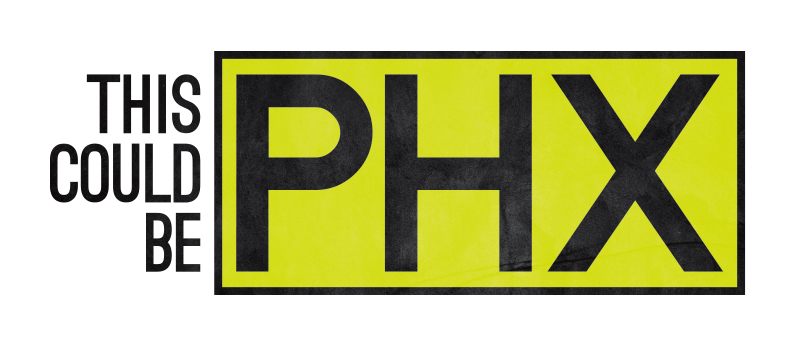22 Apr Urban City Review: Austin, TX
Last month Quinn and I decided to venture over to Austin, Texas to see just what all the hype was about. Austin was ranked the fastest growing city three years in a row by Forbes, starting in 2011. So what is it about this liberal city that is attracting so many people? Well, quite a bit actually. Browse through the photo slideshow above and read on for my experience in Austin.
First of all, Austin has become an incubator for startups. With the University of Texas situated at the north end of the city, there is a surplus of young and intelligent minds to recruit. The advantage of locating universities in the city has also been recognized here in Phoenix, where the presence of ASU, UofA and the Biomedical Campus is rapidly expandin
We arrived to Austin one week after South by Southwest, a huge music festival and interactive startup conference. We were told the fact we weren’t there during the festival was a good thing. Apparently the city is so over-crowded during this event that it can be a nightmare to get around. Regardless, we were happy to visit Austin in its more natural state. So Austin has become increasingly known for its startup scene, but there had to be more to it than that in order to elevate Austin to the number one fastest growing city three years in a row. After all, who wants to be a part of a startup in a city that nobody wants to live in?
As it turns out, Austin has a number of elements that are attracting people to move there:
- Walkability
- Colorado River
- Mixed use buildings
- Retail and restaurants
- Local grocery stores
- Barton Springs
- Bike share
- Bike infrastructure
- Car2go/zipcar
- Music scene
- Zilker Park
- Adaptive reuse
- Complete streets
A River Runs Through It
The Colorado River was one of our favorite features of Austin. Having an adjacent body of water is a luxury that many cities take advantage of. Living in Phoenix, where there is no river, lake or ocean nearby to the city, we were especially excited to use Austin’s waterfront. Along it there is a natural landscape, not a designed park. It felt like being in the middle of the forest, away from the hustle and bustle of the city. Yet, make your way around a bend in the river and Austin’s attractive skyline revealed itself.
There were trails filled with people jogging and riding their bikes. And the river was no less crowded. It too was filled with people paddle boarding and canoeing, a sign that people in Austin find it important to live a healthy and active lifestyle. Further down the river and southwest of the city was Zilker Park, a large 351 acre park. While we were there we checked out Rock Island, a large expanse of grass with large trees sparsely located throughout, and Barton Springs Pool, a dammed off section of the river where people sunbathe and swim and the water stays a cool 68 degrees year round.
Even with Rock Island’s minimalist ‘design’ the entire space was being utilized by families, couples, friends playing soccer and people walking their dogs. Quinn and I immediately thought of the new Margaret T. Hance Park master plan and how everyone is hoping it will change the narrative of the park, elevating it to a world-class place to be. We have high hopes for it, but Zilker Park was a quiet reminder that in the end, people are what make a world-class park, not necessarily the design.
Bike Culture
Back in the city we enjoyed Austin’s new B-cycle, which is a bike share program that was launched late 2013. What a convenient way to get around the city! With bike stations located all over the place we were never more than a 10-minute walk away. For just $8 dollars you get 24-hour access to a bike, as long as you return it to a station within 30-minutes of your bike ride, and then additional costs apply. With the release of B-cycle, it was imperative that Austin have a good bicycle infrastructure and we found bike lanes on many of the streets downtown. Around the University of Texas we even found some protected bike lanes.
Phoenix will also be launching their bike share program called Grid Bike. Grid Bike is currently in beta testing so you may have seen green bikes and bike racks around in Downtown Phoenix, already.
The Urban Fabric
Once we checked our bikes in and began to explore, we found that Austin had many successful features of urban design. 2nd street between Colorado St and Lavaca St had great mixed-use; there was both retail and restaurants along the street and apartments above. The street was lined with trees and benches, but instead of the trees being placed in landscape islands, something often done in Phoenix, they were in the sidewalk. This design gives pedestrians the chance to walk and sit under the trees, utilizing the trees shade all day long. All of these elements and more contributed to the walkability of Austin, and we found them in many other places as well.
One great example of adaptive re-use building was Halcyon, a coffee bar by day and bar / lounge by night. This building appears to have been a warehouse at one time containing the signature warehouse architectural feature – a raised loading dock for trucks to back-up to and large roll-up doors. In places like Portland and Vancouver, these warehouses are being turned into restaurants with the loading dock becoming the patio and the roll-up doors allowing the seating to spill out from the interior.
Live Music Capital of the Country
You can’t go to Austin and not take part in the live music scene because it will find you wherever you are. All along 6th street there are numerous bars all featuring live music. In fact, every weekend a portion of 6th street is closed down, allowing the pedestrians to reclaim the street much in the same way that people do in New Orleans on Bourbon Street. Having a main street that is known to both tourists and locals is a great benefit to the city, and has been for Austin. It becomes the place that a city is known for – that one place that everyone will tell you that you must visit while you are there. Austin even has two of these streets, including Rainey Street, which is a burgeoning strip of converted bungalows that is yet to have a sidewalk but brings in thousands of people on the weekend.
We have yet to develop that kind of street here in Downtown Phoenix, but it is imperative that we do so if we want our Downtown to become a place that people around the country want to travel to.
There are plenty of other great things about Austin, but I won’t write about all of them. If you haven’t been to Austin, I would definitely recommend going. It is a great example for Phoenix and in many ways is similar to Phoenix. I will say though, Phoenix’s light rail is an asset that Austin still does not have and it would be extremely beneficial to them; especially since they are battling some of the worst traffic in the U.S.




Sorry, the comment form is closed at this time.